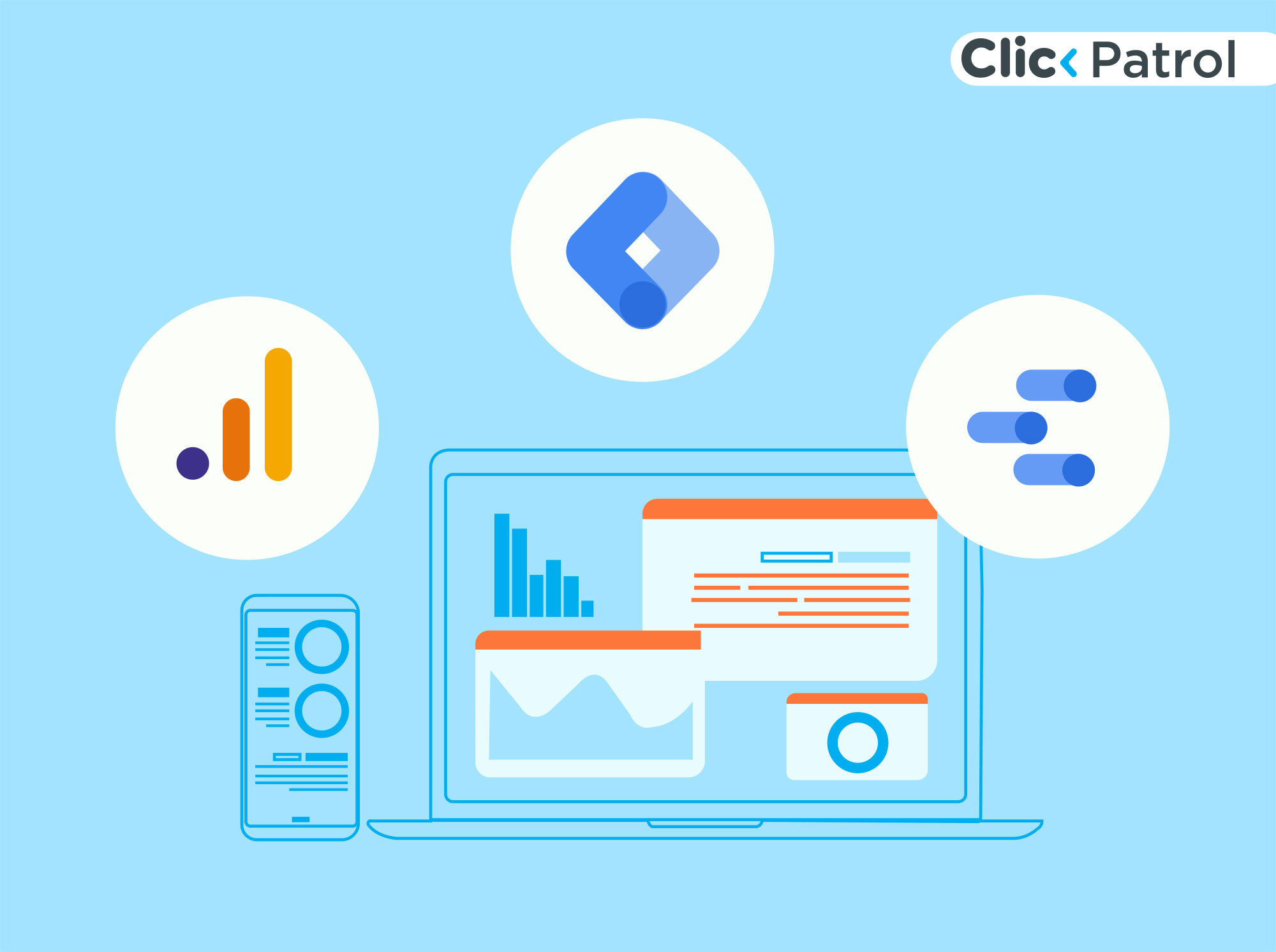An ad fraud IOC database is a structured collection of indicators of compromise, such as fraudulent domains, apps, IP addresses, device IDs and supply paths that have been linked to invalid activity. Unlike a simple static blacklist, an IOC style database is built to integrate with security tools and workflows, includes detailed metadata about the evidence behind each entry and is updated frequently so it can be used in near real time decisioning by platforms and vendors.
Ad Fraud IOC Databases Signal New Phase in Programmatic Threat Intelligence
Abisola Tanzako | Nov 28, 2025

Ad fraud threat intelligence is moving closer to cybersecurity practice, with new indicator of compromise databases targeting programmatic inventory and connected TV activity. For PPC professionals and media buyers, this shift confirms what we see daily at ClickPatrol: protecting ad budgets is no longer just a matter of basic invalid traffic filters. It now depends on sharing granular signals about fraudulent domains, apps, devices and supply paths before fake traffic reaches your campaigns.
Table of Contents
- Why an ad fraud IOC database matters for PPC and programmatic buyers
- Key components of an ad fraud IOC style database
- What this shift means for ad fraud prevention strategies
- How PPC teams can make practical use of threat intelligence
- IOC style data plus real time click inspection
- Budget impact: why this matters now
- Next steps for advertisers concerned about ad fraud
Why an ad fraud IOC database matters for PPC and programmatic buyers
In security operations, indicator of compromise databases help teams spot malicious IPs, devices or domains before serious damage occurs. Applying the same concept to ad fraud means buyers, DSPs and verification vendors can reference structured threat data when assessing whether an impression or click is likely to be fake.
For advertisers running Google Ads, Meta Ads, Microsoft Ads or CTV and display campaigns through programmatic platforms, this matters in three ways:
- Faster detection: Known fraudulent domains, apps and devices can be identified more quickly, reducing wasted spend on invalid traffic.
- Cleaner measurement: When fake traffic is filtered based on transparent, shared indicators, performance data reflects real user behavior instead of bots or spoofed devices.
- Better buying decisions: Media teams can use IOC style threat feeds as an extra layer of due diligence when evaluating inventory sources, supply paths and partners.
At ClickPatrol, we see this as part of a broader trend where ad fraud defenses look more like formal security operations, with shared data, standardized formats and regular updates rather than one off blocklists.
Key components of an ad fraud IOC style database
The newly announced ad fraud IOC database is structured to mirror common security workflows, with fields that can be consumed by SOC tools and programmatic systems. While each provider will differ, the key elements typically include:
- Lists of apps, websites and CTV channels that have shown patterns of invalid traffic or misrepresentation.
- Device identifiers and IP addresses linked to automated traffic, spoofed environments or repeated fake activity.
- Supply path information that shows where fraudulent inventory is entering the auction chain.
- Contextual metadata such as timestamps, platform, environment and evidence categories.
Because these signals are formatted as indicators of compromise, they can be integrated into existing security and monitoring workflows that many large brands already run across their tech stacks. That helps bridge the long standing gap between marketing teams and cybersecurity teams.
What this shift means for ad fraud prevention strategies
For brands and agencies, the emergence of ad fraud IOC databases reinforces a few practical points about traffic quality management:
- Relying on platform filters is not enough: Google Ads, Meta Ads and Microsoft Ads all apply their own invalid click protections, but our experience shows that sophisticated click farms and bots still pass through, especially on high volume search and performance campaigns.
- Evidence based blocking is crucial: Using indicators tied to specific devices, IP ranges, apps or placements allows more precise blocking than broad geo or audience exclusions that can affect real users.
- Cross channel coordination is essential: Fraudulent devices and sources often touch multiple channels. A device ID that triggers fake CTV impressions can just as easily appear in display retargeting or paid social clicks.
Our detection methods at ClickPatrol already rely on a similar principle. We track behavioral patterns over many data points per click, then tie those patterns back to concrete identifiers. When we block a bad source in Google Ads, the same indicators can be referenced when monitoring Meta or Microsoft Ads, which supports more consistent protection across your mix.
How PPC teams can make practical use of threat intelligence
While IOC style databases are designed for technical teams, there are several direct applications for PPC managers, performance marketers and agencies:
- Stricter placement and app controls: Maintain and regularly refresh exclusion lists for suspicious domains and apps, informed by current threat intelligence and your own campaign data.
- Risk based bidding: Treat high risk exchanges, placements or CTV environments as a separate risk tier, with tighter bid caps and stricter frequency controls.
- More accurate attribution: Work with analytics teams to ensure that invalid sessions, fake conversions and bot driven micro events are stripped from your measurement before optimization decisions are made.
- Vendor evaluation: Ask verification and protection vendors how they integrate external threat intelligence, how often indicators are updated and how they validate sources before blocking traffic.
From our vantage point at ClickPatrol, advertisers that treat ad fraud as an ongoing security problem rather than a one time setup issue see far stronger gains in ROI and data reliability.
IOC style data plus real time click inspection
Indicator lists are powerful, but they only cover known threats. Many fraud schemes are short lived, low volume or tailored to specific verticals, which means they may not appear in broad threat databases quickly enough.
This is where combining IOC style data with real time behavioral inspection of each click is vital. Our systems at ClickPatrol evaluate every click against a wide range of signals, including:
- Unnatural interaction patterns such as rapid repeated clicks, no-scroll sessions or impossible navigation behavior.
- Technical markers associated with spoofed devices or automation tools.
- Cross campaign reappearance of the same devices or IPs that previously generated invalid activity.
When we confirm suspicious behavior, we automatically block that source in platforms like Google Ads, Meta and Microsoft Ads, so your campaigns stop paying for repeated or fake visits. If that same source later appears in an IOC style feed, it acts as further validation rather than the first line of defense.
Budget impact: why this matters now
Industry studies over the last few years have consistently estimated digital ad fraud in the tens of billions of dollars annually, with programmatic display and CTV among the highest risk areas. Even relatively low fraud rates can distort performance metrics in search and social campaigns, especially for advertisers with large daily budgets.
For a typical search account spending a few thousand per day, a modest percentage of invalid clicks can quickly translate into thousands in monthly losses, plus poor optimization decisions based on corrupted data. The appearance of ad fraud IOC databases is a clear sign that the industry is acknowledging this problem as a security issue, not just an accounting annoyance.
We recommend that advertisers:
- Review their current fraud prevention setup and identify whether they are using any external threat feeds or solely relying on platform defaults.
- Evaluate third party solutions that combine IOC style data with real time click analysis and automatic blocking.
- Align marketing, security and data teams on a shared view of what constitutes invalid traffic and how it should be treated in reporting.
ClickPatrol is built around these principles. Our goal is to protect your PPC budgets from click fraud, keep your analytics cleaner and give you the confidence to scale campaigns that truly work.
Next steps for advertisers concerned about ad fraud
The rise of ad fraud IOC databases is a positive development, but it is only one piece of the defense stack. Advertisers still need day to day controls that are close to their campaigns, not just upstream in the supply chain.
If you manage significant spend on Google Ads, Meta or Microsoft Ads and suspect inflated click or impression volumes, it is a good time to audit your accounts for signals of invalid traffic. That includes repeated clicks from the same devices, high click to session drop off on key campaigns and sharp performance swings when you change placement settings.
To complement broader threat intelligence efforts, we encourage performance marketers and agencies to test dedicated click fraud protection. With ClickPatrol, you can start a free trial, see exactly which clicks we classify as invalid and how much budget we can recover. That transparency makes it easier to align internal teams on traffic quality and build a long term strategy against fraud.
Frequently Asked Questions
-
What is an ad fraud IOC database and how is it different from a standard fraud blacklist?
-
Why should PPC specialists care about threat intelligence used in programmatic and CTV?
PPC specialists should care because the same devices, IPs and actors involved in programmatic and CTV fraud often appear across search and social campaigns as well. When threat intelligence highlights risky sources in one channel, that insight can improve blocking and bid decisions in Google Ads, Meta Ads and Microsoft Ads, reducing wasted clicks and improving the accuracy of performance metrics across the whole media mix.
-
How does an ad fraud IOC database affect my advertising budget and performance risk?
An ad fraud IOC database helps reduce budget and performance risk by making it easier for platforms and vendors to avoid known fraudulent sources before they consume spend. When invalid clicks and impressions are blocked earlier, more of your budget reaches real users, your cost per conversion stabilizes and optimization decisions are based on genuine behavior instead of bot driven signals, which directly supports higher return on ad spend.
-
Is using platform level invalid click protection enough now that these databases exist?
Platform level invalid click protection is still important, but it is not enough on its own, even with new ad fraud databases in the ecosystem. Platforms focus on broad patterns and policy enforcement, while sophisticated fraud often targets specific campaigns, geos or verticals. Advertisers need additional protection that inspects behavior at the individual click level, maintains campaign specific blocklists and reacts quickly when new threats appear.
-
How can ClickPatrol work alongside ad fraud IOC databases to protect my campaigns?
ClickPatrol complements ad fraud IOC databases by focusing on granular, real time analysis of every click that hits your campaigns. Our systems monitor behavioral and technical signals to identify fake, bot or repeated clicks, then automatically block those sources in Google Ads, Meta and Microsoft Ads. When combined with broader threat intelligence, this approach gives advertisers both upstream protection from known fraud actors and precise, campaign level controls that keep PPC budgets focused on real users.






